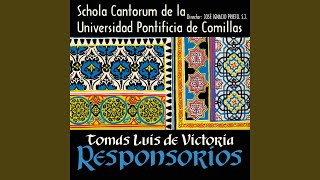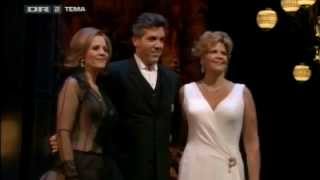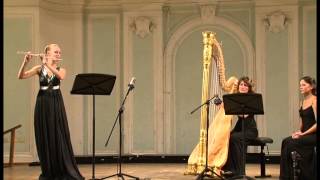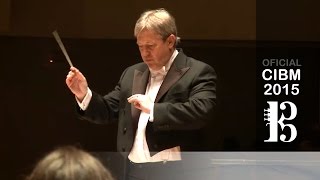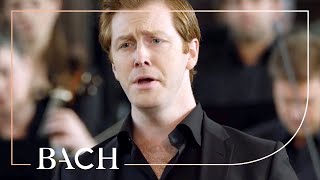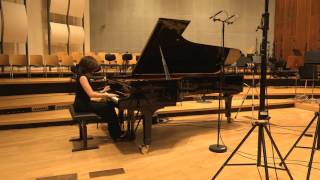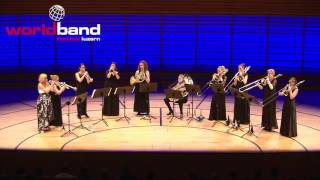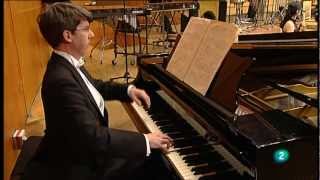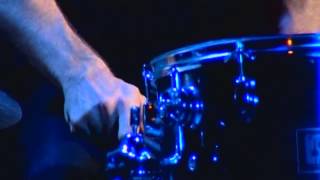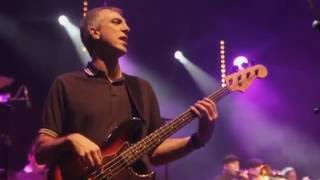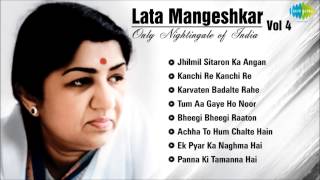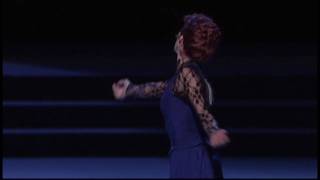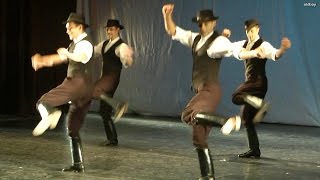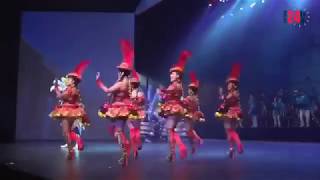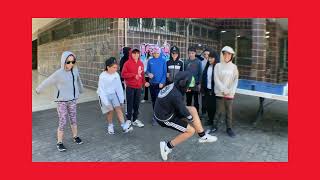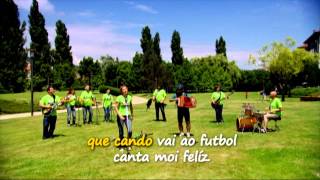Catholic Holy Week begins on March 24.
Recommended music videos for initiation to classical music
Tomás Luis de Victoria (1548 – 1611) was a Catholic priest and famous polyphonist composer of the Spanish Renaissance born in Ávila . At the age of 7 he entered the choir of the cathedral of Ávila , where he felt his vocation for the priesthood and where he would receive his first musical knowledge. At the age of 19, he moved to Rome where he furthered his studies with the illustrious composer Palestrina . In May 1585, Victoria returned to Spain as chaplain to the Empress Maria of Austria , and organist of the Monastery of the Descalzas Reales , where she worked for 24 years until the day she died. Victoria is considered one of the most relevant and advanced composers of his time, with an innovative style that heralded the imminent baroque.
José Ignacio Prieto Arrizubieta (1900–1980) was a Jesuit, composer and choral director born in Gijón , into a family of deep Christian religiosity. Prieto 's religious music is an original fusion of three elements: Gregorian chant, the sacred polyphony of the Renaissance and the “openness to modernity” with influences from Strawinski and Bartok , French impressionism and Spanish popular music. For twenty-five years, he carried out a complex musical activity at the Pontifical University of Comillas (Cantabria) at the head of the Schola Cantorum of Comillas that reached a very high level and international recognition. Today, at the head of the Schola Cantorum of Comillas , he offers us the Responsorio of Tomás Luis de Victoria for four low voices, O vos omnes.
Wolfgang Amadeus Mozart (1756-1791) is considered one of the three giants of musical composition along with Bach and Beethoven . Child prodigy born in Salzburg (Austria), at the age of six he mastered the keyboard and violin and began to compose. His father, Leopold, exhibited him on exhausting tours of different European courts. Prolific composer (more than 600 works written from the time he was five years old until his death) he cultivated all types of musical genres: piano works, chamber music, symphonies, concert works, choral works, operas... each and every one of them, masterpieces of its gender. His operas The Magic Flute, Don Giovanni, Cosí fan Tutte, and The Marriage of Figaro are among the 10 most performed operas in the world. He died in Vienna at the age of 35.
Così fan tutte , ossia La scuola degli amanti is a humorous drama in two acts with music by Wolfgang Amadeus Mozart and a libretto in Italian by Lorenzo da Ponte . Così fan tutte is one of three Mozart operas for which Da Ponte wrote the libretto. The other two collaborations were The Marriage of Figaro and Don Giovanni . The literal translation of the title is "This is how all (women) do"; These words are sung by the three men when they speak of fickle female love, in the second act, table III, just before the Finale . Musically speaking, critics highlight the symmetry of Così : two acts, three men and three women, two couples, two extreme characters (Don Alfonso and Despina), practically the same number of arias for all the soloists.
Soave sia il vento . Within those Cosí vocal groups, today we offer this delicate trio in a version by soprano Renée Fleming , mezzo Susan Graham and baritone Thomas Hampson . "May the wind be gentle, the waves calm, and may all the benign elements respond to our desires."
Gabriel Fauré (1845-1924) was a French composer, pedagogue, organist and pianist, considered one of the most outstanding French composers of his generation; His musical style influenced many composers of the 20th century . Among his best-known works are the Pavane , the Requiem , the Nocturnes for piano and the songs Après un rêve and Clair de lune . Among his mentors was Camille Saint-Saëns , who became his lifelong friend. When he achieved success, he held the important positions of organist of the Madeleine church and director of the Paris Conservatory . His legacy has been described as the link between the end of Romanticism and the Modernism of the second quarter of the 20th century .
Sicilian (also known as sicilienne, in French) is a musical form that became popular throughout Europe between the late 17th century and the 18th century . It is a slow dance that takes place in a time signature of 6/8 or 12/8 and is characterized by the presence of a trochaic rhythm , as well as by its simple melodies and clear harmonies and is usually written in a minor mode. It is a dance similar to the jig in terms of rhythm but much slower and with a melancholic character.
Today we offer Fauré 's Siciliana in flute and harp version by Olga Zmanovskaya , flute and Elizaveta Bushueva , harp.
John Adams (Worcester, Massachusetts, 1947) is an American classical music composer and conductor, one of the best known and most often performed in his country. His creativity spans a wide range of media: orchestral works, operas, dance music, music for videos and films, as well as electronic and instrumental works. contemporary American. From his first works he took minimalism to a new and fresh terrain, characterized by luminous sounds and a strong and theatrical approach to musical forms. As Andrew Porter wrote in " The New Yorker ," Adams is the creator of a "new, flexible language capable of producing attractive and formally strong large-scale works."
Short Ride in a Fast Machine is a 1986 orchestral work by John Adams , to which the author applies the description "fanfare for orchestra." Commenting on the title, Adams asks: "Do you know what happens when someone asks you to ride in a cool sports car and then wish you hadn't?" The work is an example of Adams 's post-minimal style; style that derives from minimalism defined by the works of Steve Reich, Terry Riley and Philip Glass , although it proceeds to "make use of minimalist techniques in more dramatic settings."
Today it is offered to us by the Wind Orchestra Zaragoza conducted by Frank de Vuyst in a Music Band version.
Recommended classical music videos
Johann Sebastian Bach (1685-1750) was a German violinist, organist, conductor and composer; He was born in Eisenach into the most prominent musical family in history with more than 30 famous composers within it. In 1703 he obtained his first job as a court musician for the Prince of Arndstat and in 1707 he moved to Mülhausen as an organist, where he married his cousin Maria Barbara with whom he had seven children. After the death of his wife in 1720, he remarried after a year and a half to María Magdalena with whom he would have another thirteen children. In 1723 he moved to Leipzig where he would reside until his death at the age of 65. A prolific composer, he is considered one of the main three geniuses in the History of Music along with Mozart and Beethoven.
The St. Matthew Passion is an oratorio written by Johann Sebastian Bach for solo voices, double choir and double orchestra. It presents the suffering and death of Christ according to the Gospel of Saint Matthew and is the composer's most extensive work, although it is divided into two large parts, between which the sermon took place. The narrative of the text is sung literally by an Evangelist , the rest of the characters in the plot ( Christ, Judas, Peter , etc.) are played by different soloists, the biblical text is set to music in recitatives , while the ariosos and the arias , present new texts that give a more intimate character to the life of Christ .
The version that we present today is offered to us by the Dutch Bach Society led by the also Dutch teacher Josephus van Veldhoven (1952).
Franz Liszt (1811-1886) was a brilliant Hungarian pianist and composer, whose works have endured over the years; works for solo or concert piano, as well as orchestral works, among which his symphonic poems should be highlighted, the musical form of which he is the progenitor. Liszt 's father, an amateur musician, gave him his first piano lesson at the age of seven. In October and November 1820, at the age of nine, he appeared in concerts in Sopron and Bratislava . His father arranged for Franz to be presented to the Court of the House of Esterházy as a child prodigy. He was famous throughout Europe during the 19th century ; His contemporaries claimed that he was the most technically advanced pianist of his time and the greatest of all time.
Capriccio alla Turca (on themes from “ The Ruins of Athens ” by Beethoven ) (1846). Beethoven had used a Turkish march for the music of the Kotzebue festival of 1811, which he had previously used as a theme for the Variations op.76 . Liszt used this march as the basis for his Capriccio . "With a lot of sonic imagination, a perfectly controlled touch and precise use of the pedal, Evgenia Rubinova lets the melodic lines flourish..." ( Extracted from the bottom of the video )
Evgenia Rubinova (1977) is a pianist born in Tashkent , Uzbekistan. At the age of twelve he won the Russian International Piano Competition . He later graduated with honors from the Gnessin Music Academy and College , Moscow 's prestigious music school. He attended master classes with pianists such as Vladimir Krainev and Alexei Lyubimov , and later those with Russian-American professor Lev Natochenny. She is currently a piano teacher at the Leopold Mozart Center in Augsburg .
Leonard Bernstein (1918 - 1990), American composer, pianist and conductor, was the first conductor born in the USA to achieve worldwide fame, considered one of the best conductors in the world and famous for having directed the New York Philharmonic Orchestra. , for his Concerts for young people on television between 1958 and 1972 and for his multiple compositions. He was also an essential figure in the modern revival of the music of Gustav Mahler , a composer of whom he was passionately interested. As a composer he wrote music for piano, chamber music, choral music, religious music, numerous stage works for ballet, film, opera and musicals, as well as abundant orchestral work.
West Side Story is a musical with a book by Arthur Laurents , music by Leonard Bernstein , and lyrics by Stephen Sondheim . Loosely based on William Shakespeare 's Romeo and Juliet , the action takes place in a New York neighborhood in the mid-1950s between two youth gangs of different ethnicities: the Jets (of European roots) and the Sharks (of Puerto Rican origin). Everything gets complicated when Tony , a former member of the Jets , falls in love with Maria , the sister of the leader of the Sharks . The approach to the social problems of the time marked a turning point in American musical theater. In 1961 it was brought to the big screen under the direction of Robert Wise .
Tine Thing Helseth (1987) is a Norwegian trumpeter specialized in classical repertoire. Born in Oslo , she began playing trumpet at seven years of age; among his teachers were Heidi Johanessen and since 2002, Arnulf Naur Nilsen . Today she offers us a selection from Leonard Bernstein 's soundtrack, West Side Story , leading the female brass group tenThing Brass Ensemble created by herself with nine other friends and colleagues as a way to actively enjoy her instrumental family (wind-metal ) and in the process claim and demonstrate their ability to play these instruments, usually played mostly by men. Three trumpets, a flugelhorn, a French horn, four trombones and a tuba are the members of the ensemble.
Witold Lutosławski (1913-1994) was one of the most important European composers of the 20th century . He is possibly the most important Polish composer after Chopin , and his country's most eminent musician in the last three decades of the century. During his lifetime he earned a host of international awards, including being knighted in the Order of the White Eagle , Poland 's highest honor. He studied piano and composition in Warsaw , and his early works were markedly influenced by Polish folk music. Beginning in the late 1950s, he incorporated his own compositional methods with small group harmonies of musical intervals and the use of random processes, in which the rhythmic coordination of the various parts is subject to chance.
Livre pour Orchester (Book for Orchestra) was written in 1968 for the Hagen Orchestra of Westphalia and dedicated to its conductor, Bertold Lehmann . The work is organized into four ' chapters ' separated by three interludes (short melodic fragments 'ad libitum' and not directed). Lutoslawski has said that the music in these interludes is deliberately insignificant and serves simply as relaxation points for the audience. Each interlude lasts about twenty seconds; the first is scored for three clarinets, the second for two clarinets and harp, and the third for harp and piano.
In the FIRST CHAPTER (0´27´´), the strings predominate with plaintive glissandi and questions that frame an episode for brass and percussion. CHAPTER II (4´45´´) is more dynamic: it begins with the bright sounds of plucked strings and tuned percussion, followed by longer, more loquacious contributions from the wind and brass. CHAPTER III (7'58'') incorporates aspects of the two previous chapters. Only gradually does one realize that the third interlude, far from being insignificant, is becoming something much bigger: in the final chapter, which emerges when the interlude is in which the instruments (harp and piano) begin to attract those sounds with which the second chapter began. CHAPTER IV (10'09''). There is a slow release of energy, with the main orchestra gradually taking over and the texture fans outwards. The individual blocks become shorter and more active, until the entire texture becomes a brief, pulsating joke just before the climax. But the climax does not have the last word: as it continues, a door to a new world opens (16'49''). Perhaps this lyrical coda for two flutes, accompanied by a string chorale, is Lutoslawski 's "unanswered question."
The work is presented to us today by the Spanish Radio Television Orchestra conducted by the German maestro Gunther Herbig .
Recommended music videos for all tastes
Esbjörn Svensson Trio (also known as EST ) was a Swedish musical group whose main style was jazz . It was founded in 1993 and consisted of leader Esbjörn Svensson (piano), Dan Berglund (bass) and Magnus Öström (drums). EST were known for their innovative style and had great worldwide recognition, both among critics and experts and in sales. Although its name refers to the name of the pianist and founder, the group defined itself as "a pop band that plays jazz." In addition, he broke with the tradition of having a leader in the band in favor of equality among its members. They performed in jazz venues, as well as in typical rock band settings, using smoke and lighting effects.
Camila Cabello ( 1997) is a Cuban singer-songwriter who belonged to the female vocal group Fifth Harmony. until December 2016 when he left it, henceforth acting as a soloist and releasing different albums; It has been characterized by its humanitarian work in favor of female egalitarianism, child protection and other social problems. The album we offer today, Camila , was released in January 2018, debuting at number 1 in Canada and on the Billboard 200 in the United States .
Betagarri was a Basque ska group that began their work in 1993, although their first album did not arrive until 1997. Their usual tours were throughout Europe ; although they also performed in Japan, the USA and Argentina . In 2007 they created the song Garenaren Jostun which was the official song of the Araba Euskaraz that was celebrated that year in La Puebla de Arganzón . In 2009 his song Ongi etorri lagun was the song that would be officially sung throughout the Korrika throughout the Basque Country . In 2017 the group disbanded after a 24-year career.
Lata Mangeshkar (1929-2022)1 was an Indian singer recognized as a musical dubber in Bollywood films. She was the elder sister of singers Asha Bhosle, Hridaynath Mangeshkar, Usha Mangeshkar and Meena Khadikar . Trained from the age of five by her father, the classical singer Deenanath Mangeshkar , her career began in 1942. In a seven-decade career, she sang in more than a thousand films in nearly twenty Indian languages, mainly Hindi and Marathi . Because he also performed songs in Bengali and Urdu , he was extremely popular in Bangladesh and Pakistan . She received the highest Indian artistic decorations and appeared in the Guinness Book of Records from 1974 to 1991 as the most recorded singer in the world.
Recommended peculiar videos
Johann Strauss (son) (1825-1899) was an Austrian composer, son of Johann Strauss and brother of the composers Josef Strauss and Eduard Strauss ; Known in life as “the king of the waltz”, he was an essential factor in its evolution and sophistication, going from being a peasant dance to an entertainment dance of the Imperial Court . He is the best known of the family for his waltzes, his polkas and his marches; composer, also, of several operettas. His father wanted to prevent his son from going through the hardships of a musician's life, so it was his mother who helped and encouraged him to focus on music. His work forms the basis of the repertoire offered annually at the Vienna Philharmonic Orchestra 's New Year's Concert .
La Chauve-souris ( The Bat, in Spanish; Die Fledermaus original title in German) is a comic operetta in three acts with music by Johann Strauss (son) and a German libretto by Carl Haffner and Richard Genée . It premiered on April 5, 1874 at the Theater an der Wien in Vienna . The play is based on a German comedy by Julius Roderich Benedix called Das Gefängnis (The Prison), which in turn is based on a vaudeville, Le Réveillon , by Henri Meilhac and Ludovic Halévy . Today we offer a scene from the aforementioned operetta in a version choreographed by Roland Petit and starring Alessandra Ferri (1962), considered the greatest Italian dancer since Carla Fracci ), and Massimo Murru (etoile of the Teatro de la Scala in Milan ).
The Legényes are male dances, very typical of the Kalotaszeg region in Transylvania. These types of dances are usually performed by young men, but older men can dance them too. They are freestyle dances, characterized by jumping, running and clicking heels. To this day, the legényes remain one of the most popular dances of the Hungarian peasantry. Sometimes women also participate, standing in side rows and singing verses while the man dances.
The Morenada is a highland folk dance whose origin is under debate. This dance is practiced mainly in Bolivia, as well as in Peru and in recent years, with Bolivian or Peruvian immigration, in Chile , Argentina and other countries. The dance dates back to colonial times and is inspired by the slave trade, brought by the Spanish conquerors to work as laborers in the silver mines in the Viceroyalty of Peru , probably started by the Aymaras disguised as blacks and representing characters. like the foreman and the black troop. It was born precisely in the brotherhoods of slaves who came from Africa who mocked the dances of the white lords. Today it is offered to us by the National Folklore Cast of Peru .
The Berber People (“Amazigh”) are a group of indigenous ethnic groups in North Africa , which are distributed from the Canary Islands and the continental Atlantic coast to the oasis of Siwa, in Egypt . Their culture dates back more than 4,000 years, with the Berbers being inhabitants before the arrival of the Arabs . Since ancient times, the Imazighen (plural of Amazigh), whose name means “the Free” have fought for their untouchable freedom, and they do so to the extreme. Despite oppression, they preserve their traditions and practice them with pride; from its gastronomy or its diverse languages to its costumes and tattoos, its music and its beautiful dances. Their Music and their dances, happy, rhythmic, colorful and collective, tell us a story of love for the Earth and the joy of living in a tribe.
Recommended music videos for children
Various Wikipedia articles have been used to write these texts.
The texts of Videomusicalis are written in Basque, Spanish and English.





